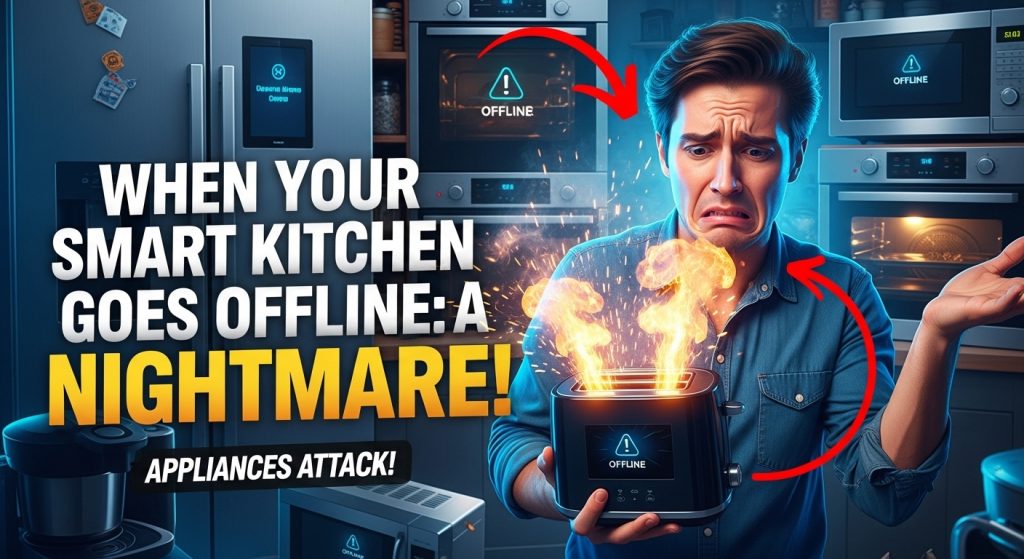Ever wondered why your smart fridge suddenly can’t connect to WiFi or your high-tech oven refuses to sync with your phone? You’re not alone – connectivity hiccups are becoming the new normal in our increasingly connected kitchens, and trust me, there’s usually a simple fix hiding behind all that techy frustration.Picture this: you’re hosting a dinner party, and your smart oven decides to go completely offline right when you need to preheat it remotely. Or maybe your WiFi-enabled dishwasher starts flashing error codes like it’s speaking in ancient hieroglyphics. I’ve been there, frantically pressing buttons while my guests wonder why I’m having a full conversation with my appliances. The truth is, smart appliances are amazing when they work, but when they don’t, it feels like your entire kitchen has staged a digital revolt.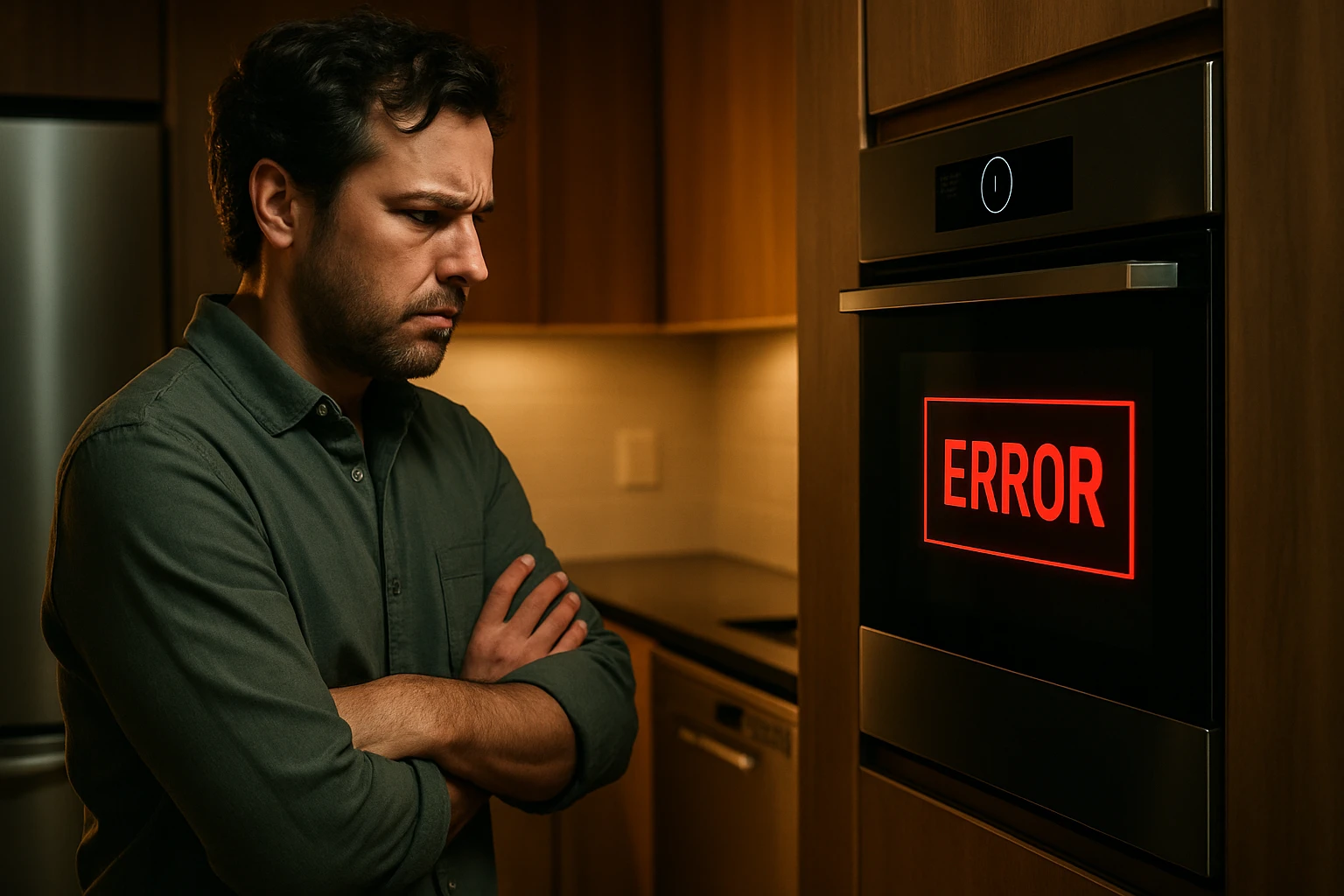 Smart appliance connectivity issues aren’t just minor inconveniences – they’re becoming one of the most common problems homeowners face in Richmond and beyond. From refrigerators that lose their internet connection to washing machines that refuse to communicate with their companion apps, these high-tech helpers can quickly become high-maintenance headaches. The good news? Most connectivity problems have straightforward solutions once you understand what’s actually going wrong behind the scenes.Understanding why these issues happen is the first step toward preventing them. Modern appliances rely on complex networks of sensors, processors, and wireless connections that can be disrupted by everything from router updates to simple interference from other devices. The key is learning to troubleshoot these problems systematically rather than randomly pressing buttons and hoping for the best.
Smart appliance connectivity issues aren’t just minor inconveniences – they’re becoming one of the most common problems homeowners face in Richmond and beyond. From refrigerators that lose their internet connection to washing machines that refuse to communicate with their companion apps, these high-tech helpers can quickly become high-maintenance headaches. The good news? Most connectivity problems have straightforward solutions once you understand what’s actually going wrong behind the scenes.Understanding why these issues happen is the first step toward preventing them. Modern appliances rely on complex networks of sensors, processors, and wireless connections that can be disrupted by everything from router updates to simple interference from other devices. The key is learning to troubleshoot these problems systematically rather than randomly pressing buttons and hoping for the best.
Key Outtakes:
- Most smart appliance connectivity issues stem from WiFi network problems, not appliance malfunctions
- Regular software updates and proper network maintenance can prevent 80% of common connection problems
- Professional technicians can diagnose complex connectivity issues that basic troubleshooting can’t resolve
- Smart appliances require dedicated network bandwidth and may struggle on overcrowded home networks
- Environmental factors like interference from other electronics can significantly impact appliance connectivity
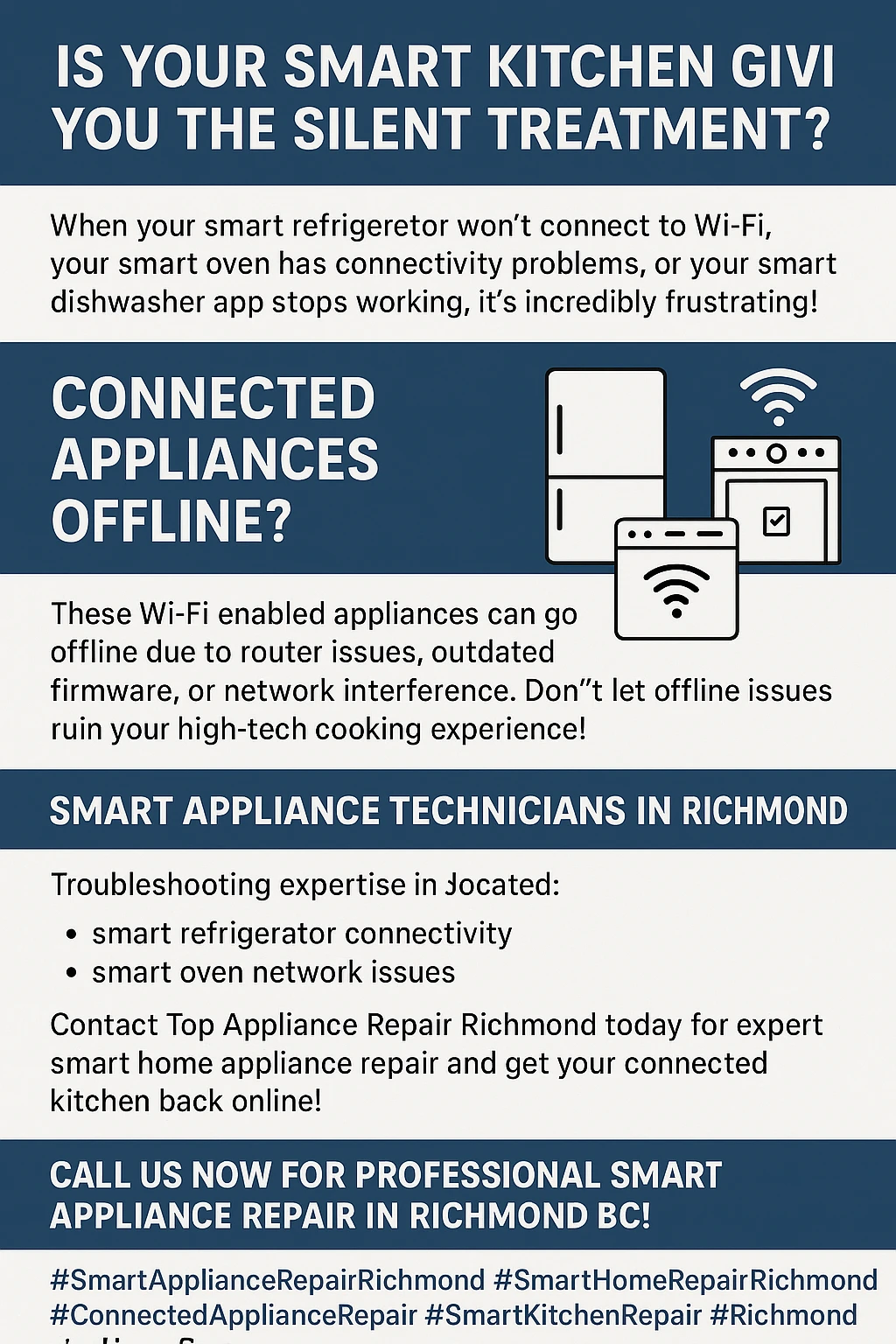
Understanding Smart Appliance Connectivity Problems
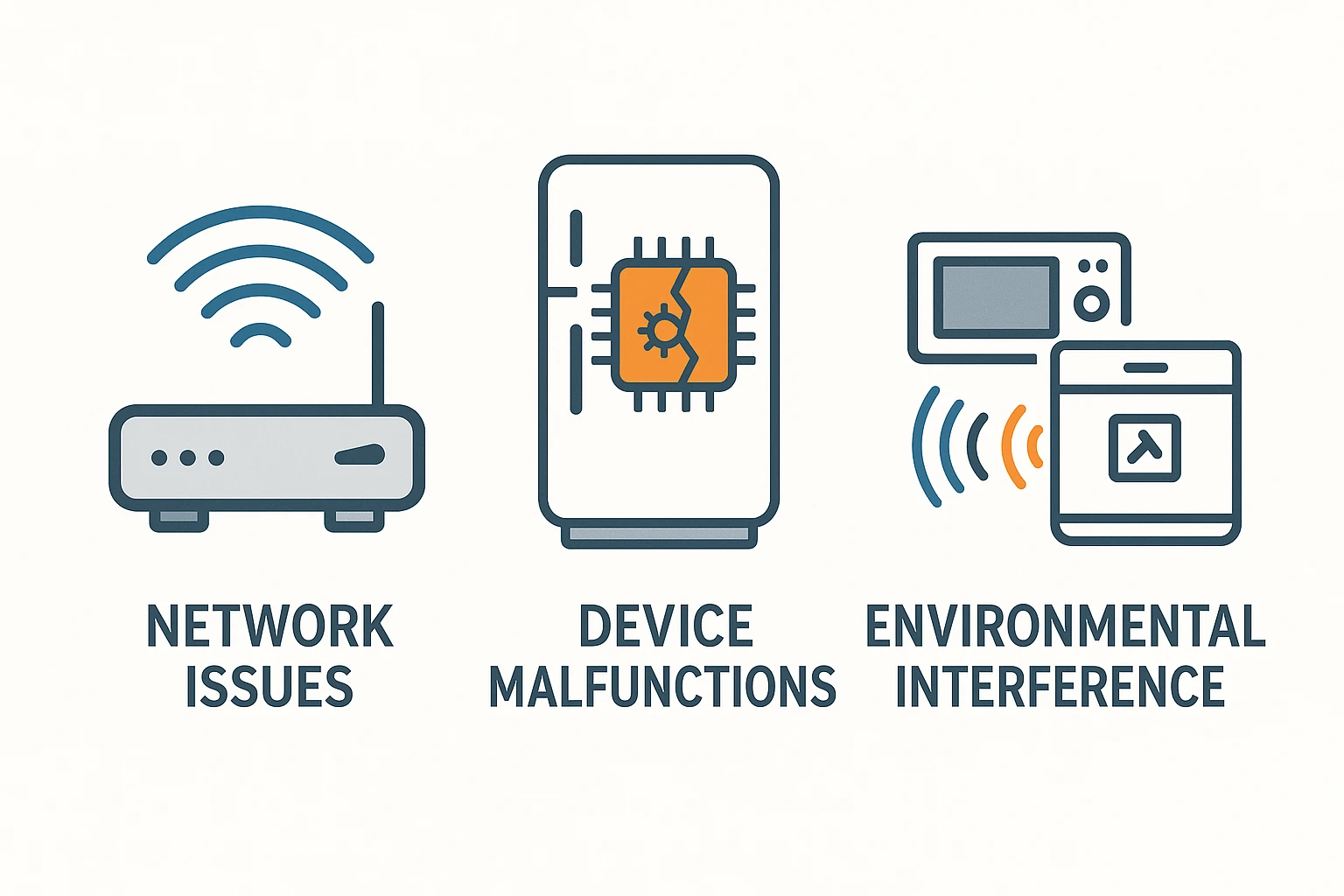 The reality of smart appliance connectivity is more complex than most manufacturers let on. These devices aren’t just appliances with WiFi chips slapped on – they’re essentially computers that happen to wash dishes, keep food cold, or cook meals. When your smart refrigerator loses connection, it’s experiencing the same type of network issues that might affect your laptop or smartphone, but with the added complexity of being embedded in a large appliance that’s harder to reset or troubleshoot.Most connectivity problems fall into three main categories: network-related issues, device-specific malfunctions, and environmental interference. Network problems are by far the most common, accounting for roughly 70% of all smart appliance connectivity complaints. These include everything from weak WiFi signals to router compatibility issues to bandwidth limitations that occur when too many devices try to connect simultaneously. Your smart oven might work perfectly in the morning but struggle to connect in the evening when everyone’s home streaming videos and video chatting.Device-specific issues are the second most common culprit and often involve outdated firmware, corrupted software, or hardware failures within the appliance’s communication systems. Unlike your phone or computer, which receive regular automatic updates, many smart appliances require manual firmware updates that homeowners often overlook. This oversight can lead to compatibility issues with newer router technologies or security protocols, effectively isolating the appliance from the network even though everything appears to be configured correctly.Environmental interference rounds out the trio of common problems, and it’s often the most overlooked cause of connectivity issues. Smart appliances operate on the same 2.4GHz and 5GHz frequencies as countless other devices in your home, from microwaves to baby monitors to garage door openers. When these devices operate simultaneously, they can create interference that disrupts the delicate communication between your appliances and your home network. The problem becomes even more complex in densely populated areas like Richmond, where neighboring networks and devices can add additional layers of interference.
The reality of smart appliance connectivity is more complex than most manufacturers let on. These devices aren’t just appliances with WiFi chips slapped on – they’re essentially computers that happen to wash dishes, keep food cold, or cook meals. When your smart refrigerator loses connection, it’s experiencing the same type of network issues that might affect your laptop or smartphone, but with the added complexity of being embedded in a large appliance that’s harder to reset or troubleshoot.Most connectivity problems fall into three main categories: network-related issues, device-specific malfunctions, and environmental interference. Network problems are by far the most common, accounting for roughly 70% of all smart appliance connectivity complaints. These include everything from weak WiFi signals to router compatibility issues to bandwidth limitations that occur when too many devices try to connect simultaneously. Your smart oven might work perfectly in the morning but struggle to connect in the evening when everyone’s home streaming videos and video chatting.Device-specific issues are the second most common culprit and often involve outdated firmware, corrupted software, or hardware failures within the appliance’s communication systems. Unlike your phone or computer, which receive regular automatic updates, many smart appliances require manual firmware updates that homeowners often overlook. This oversight can lead to compatibility issues with newer router technologies or security protocols, effectively isolating the appliance from the network even though everything appears to be configured correctly.Environmental interference rounds out the trio of common problems, and it’s often the most overlooked cause of connectivity issues. Smart appliances operate on the same 2.4GHz and 5GHz frequencies as countless other devices in your home, from microwaves to baby monitors to garage door openers. When these devices operate simultaneously, they can create interference that disrupts the delicate communication between your appliances and your home network. The problem becomes even more complex in densely populated areas like Richmond, where neighboring networks and devices can add additional layers of interference.
Common WiFi and Network Issues
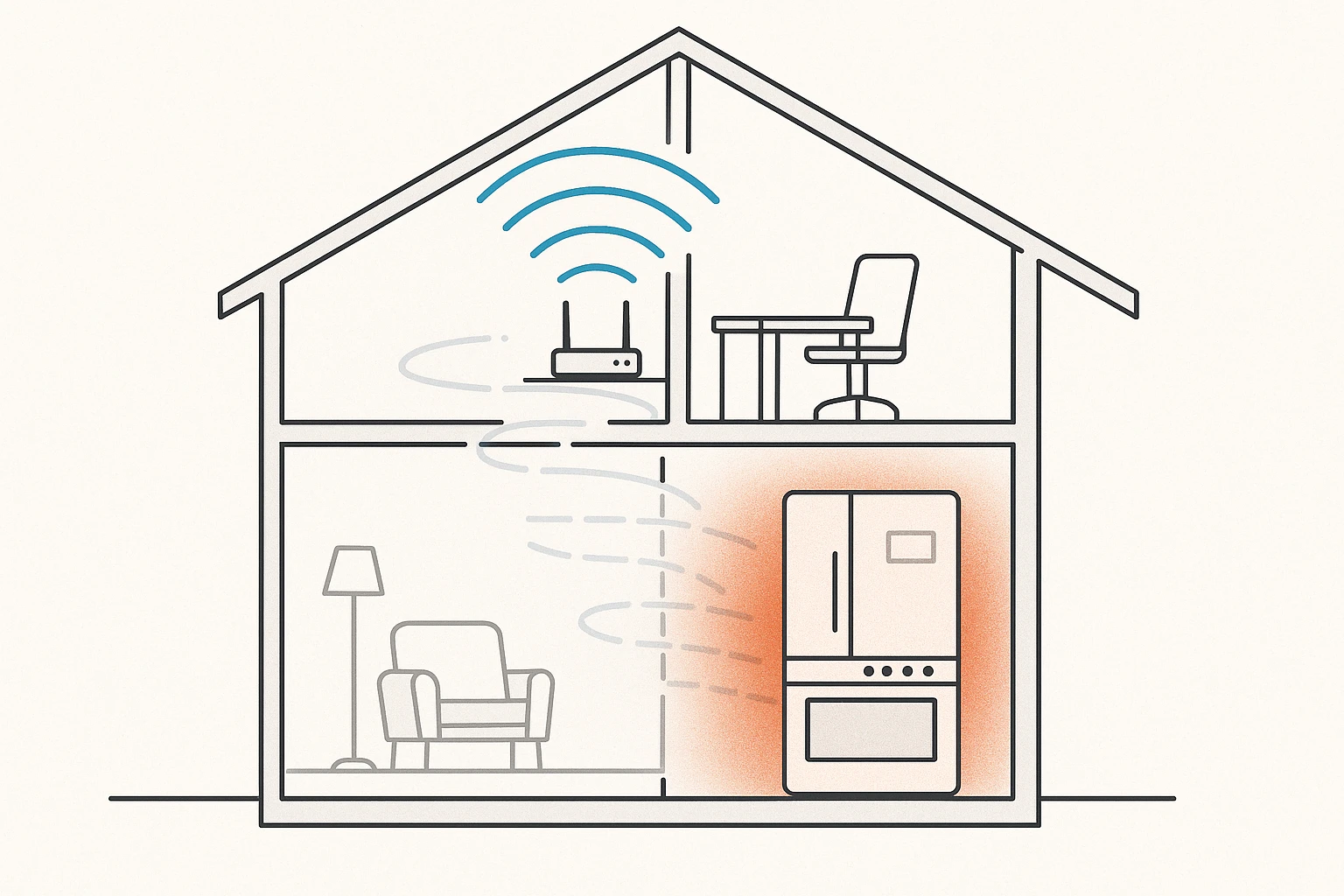 After dealing with countless frustrated homeowners, I’ve learned that network problems are almost always the first place to look when smart appliances start acting up. Your home WiFi network is like the nervous system of your smart home – when it’s healthy, everything communicates smoothly, but when there are issues, the symptoms can manifest in confusing and seemingly unrelated ways across different appliances.The most frequent network issue I encounter is insufficient signal strength in the areas where appliances are located. Unlike smartphones or laptops that you carry around and naturally use in areas with good reception, appliances are fixed in specific locations that might not have optimal WiFi coverage. Your kitchen might be on the opposite side of the house from your router, or your laundry room might be in a basement with concrete walls that block wireless signals. Smart appliances typically need a stronger, more consistent connection than most people realize because they’re constantly sending status updates and receiving commands.Router compatibility represents another major category of network-related problems. Many older routers use security protocols or connection standards that newer smart appliances can’t properly communicate with. I’ve seen cases where a homeowner’s five-year-old router works perfectly for phones, tablets, and computers but completely refuses to maintain stable connections with recently purchased smart appliances. The appliances might connect initially but then drop offline repeatedly, creating the frustrating experience of intermittent functionality that’s difficult to predict or resolve.Bandwidth limitations create particularly frustrating scenarios because they often manifest as timing-related problems that seem random. Your smart dishwasher might work perfectly most of the time but fail to connect when other family members are streaming movies or participating in video calls. Smart appliances don’t require enormous amounts of bandwidth for basic functions, but they do need consistent, reliable connections that can be disrupted when network traffic is high. The problem becomes more pronounced in homes with multiple smart appliances that all compete for network resources simultaneously.Network congestion from neighboring WiFi networks is an increasingly common issue in densely populated areas. When multiple households in the same area use overlapping WiFi channels, the resulting interference can cause connection drops, slow response times, and general unreliability across all connected devices. This type of interference is particularly problematic for appliances because, unlike phones or computers, they often lack sophisticated error correction and retry mechanisms that help maintain connections in challenging network environments.IP address conflicts and DHCP limitations represent more technical network issues that can cause mysterious connectivity problems. Most home routers automatically assign IP addresses to connected devices, but problems arise when the router runs out of available addresses or when devices try to claim addresses that are already in use. Smart appliances experiencing IP conflicts might appear to connect successfully but then lose functionality or become unreachable through their companion apps, creating confusion about whether the problem is with the appliance, the network, or the controlling software.
After dealing with countless frustrated homeowners, I’ve learned that network problems are almost always the first place to look when smart appliances start acting up. Your home WiFi network is like the nervous system of your smart home – when it’s healthy, everything communicates smoothly, but when there are issues, the symptoms can manifest in confusing and seemingly unrelated ways across different appliances.The most frequent network issue I encounter is insufficient signal strength in the areas where appliances are located. Unlike smartphones or laptops that you carry around and naturally use in areas with good reception, appliances are fixed in specific locations that might not have optimal WiFi coverage. Your kitchen might be on the opposite side of the house from your router, or your laundry room might be in a basement with concrete walls that block wireless signals. Smart appliances typically need a stronger, more consistent connection than most people realize because they’re constantly sending status updates and receiving commands.Router compatibility represents another major category of network-related problems. Many older routers use security protocols or connection standards that newer smart appliances can’t properly communicate with. I’ve seen cases where a homeowner’s five-year-old router works perfectly for phones, tablets, and computers but completely refuses to maintain stable connections with recently purchased smart appliances. The appliances might connect initially but then drop offline repeatedly, creating the frustrating experience of intermittent functionality that’s difficult to predict or resolve.Bandwidth limitations create particularly frustrating scenarios because they often manifest as timing-related problems that seem random. Your smart dishwasher might work perfectly most of the time but fail to connect when other family members are streaming movies or participating in video calls. Smart appliances don’t require enormous amounts of bandwidth for basic functions, but they do need consistent, reliable connections that can be disrupted when network traffic is high. The problem becomes more pronounced in homes with multiple smart appliances that all compete for network resources simultaneously.Network congestion from neighboring WiFi networks is an increasingly common issue in densely populated areas. When multiple households in the same area use overlapping WiFi channels, the resulting interference can cause connection drops, slow response times, and general unreliability across all connected devices. This type of interference is particularly problematic for appliances because, unlike phones or computers, they often lack sophisticated error correction and retry mechanisms that help maintain connections in challenging network environments.IP address conflicts and DHCP limitations represent more technical network issues that can cause mysterious connectivity problems. Most home routers automatically assign IP addresses to connected devices, but problems arise when the router runs out of available addresses or when devices try to claim addresses that are already in use. Smart appliances experiencing IP conflicts might appear to connect successfully but then lose functionality or become unreachable through their companion apps, creating confusion about whether the problem is with the appliance, the network, or the controlling software.
Device-Specific Connectivity Failures
Moving beyond network issues, device-specific problems within smart appliances themselves create their own unique set of connectivity challenges. These problems are often more technical in nature and typically require deeper troubleshooting or professional intervention to resolve properly. Understanding these issues helps differentiate between problems you can fix yourself and those that need expert attention.Firmware corruption or outdated software represents the most common device-specific connectivity problem. Smart appliances run specialized operating systems that control both their core functions and their network connectivity features. When this software becomes corrupted or falls significantly behind current standards, the appliance might lose the ability to connect to modern networks or maintain stable connections. Unlike smartphones that automatically update their software, most smart appliances require manual intervention to install firmware updates, and many homeowners are unaware that these updates are available or necessary.Hardware failures within the appliance’s communication systems create particularly challenging diagnostic scenarios. The WiFi chip, antenna, or associated circuitry can fail partially or completely, leading to symptoms that range from inability to detect networks to connections that work briefly before failing. These hardware failures often develop gradually, so an appliance might work fine for months or years before connectivity becomes increasingly unreliable. The challenge for homeowners is distinguishing between hardware failures and other types of problems that might have similar symptoms.Memory and processing limitations within older smart appliances can cause connectivity problems as network technologies evolve and become more demanding. Early smart appliances were designed with minimal processing power and memory, which was adequate for simpler network protocols but becomes insufficient as security standards improve and communication becomes more complex. These appliances might struggle to maintain connections with modern routers that use advanced encryption or require more sophisticated handshaking protocols.Configuration corruption represents another category of device-specific problems that can be particularly frustrating to diagnose. Smart appliances store network settings, security certificates, and other connection parameters in internal memory that can become corrupted due to power fluctuations, software bugs, or normal wear and tear. When this stored information becomes corrupted, the appliance might appear to remember network settings but be unable to use them effectively, or it might forget all network configuration repeatedly, requiring constant reconfiguration.Sensor and component integration issues can create connectivity problems that seem unrelated to networking but actually stem from deeper system failures. Modern smart appliances rely on numerous sensors and subsystems that must communicate internally before the appliance can communicate externally with your home network.
